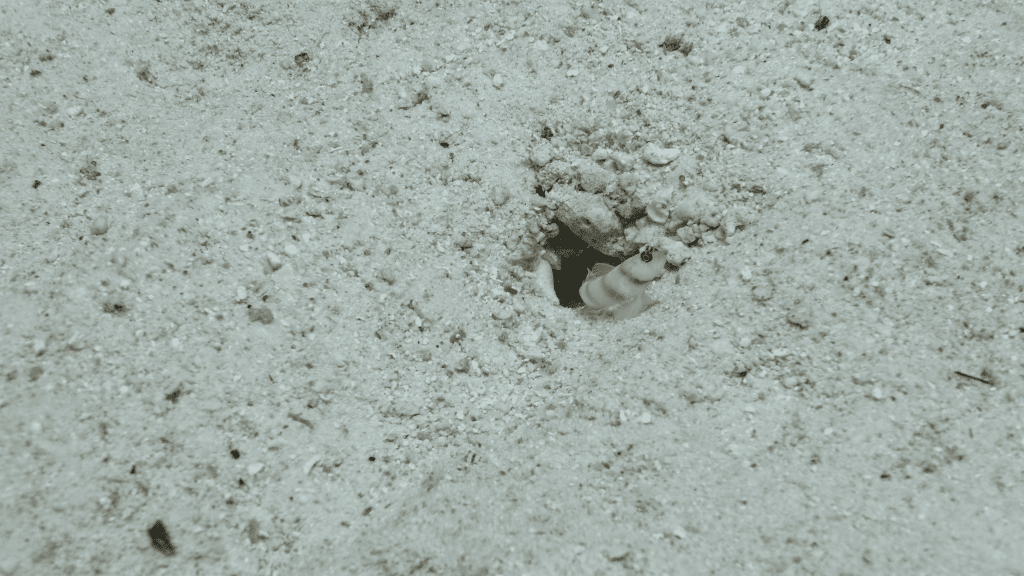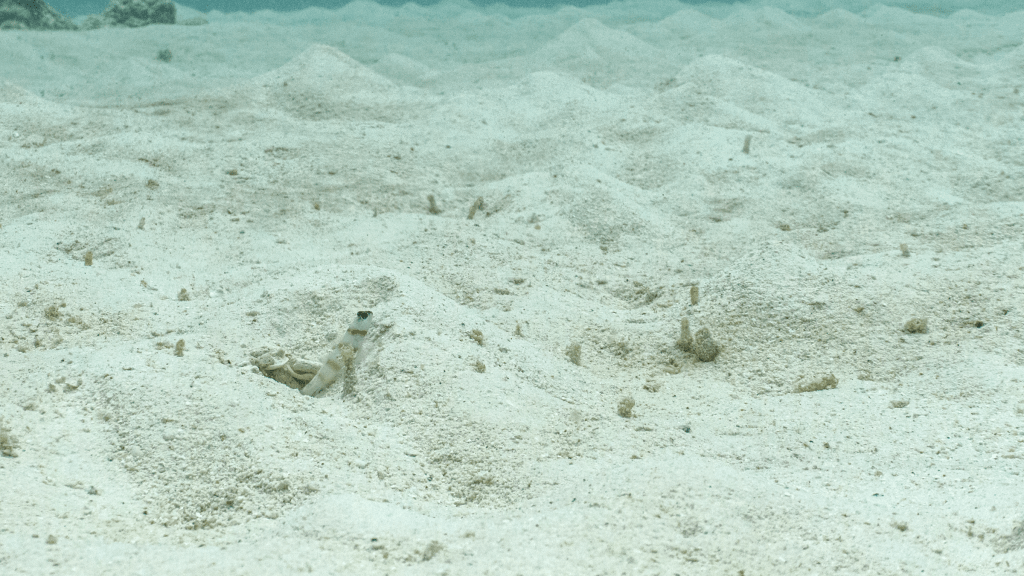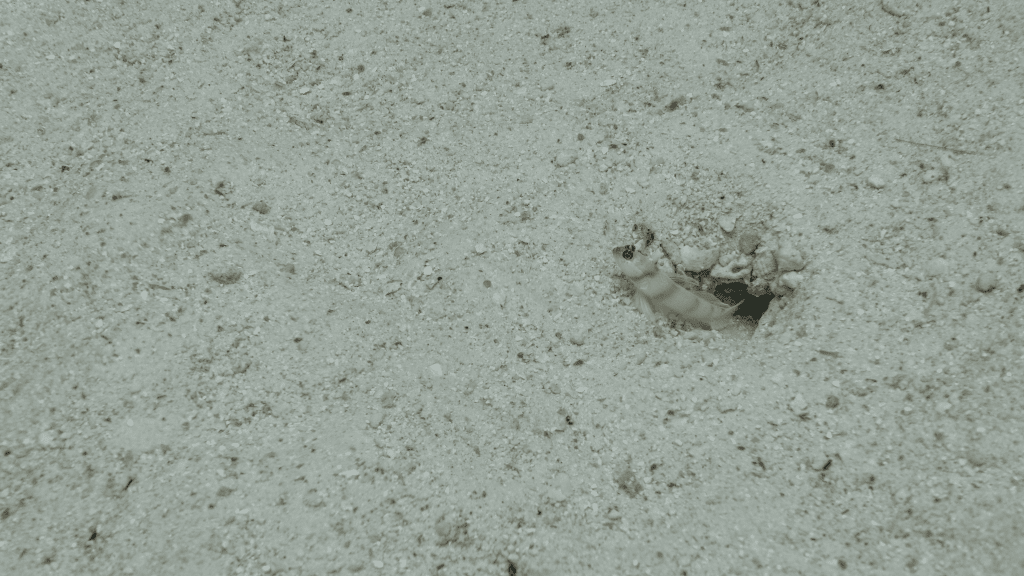Steinitz’ Prawn-goby

The Steinitz’ Prawn-goby (Amblyeleotris steinitzi) is a small fish, typically reaching up to 10 cm in length. It has a slender, elongated body with a pale coloration that can range from white to light beige. The fish's body is adorned with several wide vertical orange or reddish-brown bands. It has large, expressive eyes and a distinctive high dorsal fin. The caudal fin is rounded, and the fish uses its long pectoral fins to rest on the substrate.
The Steinitz’ Prawn-goby inhabits the Indo-Pacific region, particularly in shallow coastal waters and on coral reefs. It prefers sandy or gravelly substrates where it can easily dig burrows. This species is known for its symbiotic relationship with alpheid shrimps, also known as pistol shrimps. The goby and the shrimp share a burrow: the shrimp maintains the burrow, while the fish acts as a lookout, warning of predators.

Amblyeleotris steinitzi reproduces through external fertilization. During the breeding season, males and females form pairs, and the female lays eggs in a protected area within the burrow. The male fertilizes the eggs, and both parents guard them until hatching. The larvae are pelagic, drifting in open water before settling and transforming into juveniles.
The goby feeds mainly on small invertebrates, such as crustaceans and worms. It uses its keen eyesight to spot prey and captures it by quickly darting out from its burrow. The fish's diet also includes small amounts of algae and detritus.
This is a shy fish that quickly retreats into its burrow at the first sign of danger. Its small size and peaceful nature make it completely harmless to humans.

